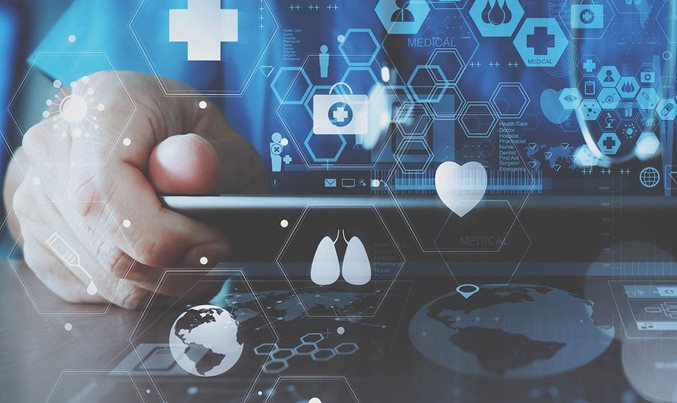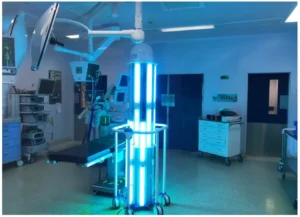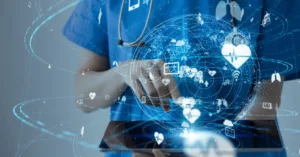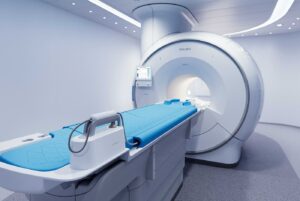The advent of new diagnostic tools has revolutionized the ever-changing healthcare landscape. These advanced technologies are changing the way diseases are detected, making diagnoses faster, more accurate, and less invasive in many cases. Whether used in hospitals, clinics, or at home, these devices are helping healthcare professionals make informed decisions and provide more personalized care. As technological advancements persist, diagnosis emerges as a crucial and captivating aspect of contemporary medicine.
From Traditional Diagnostic Tools to High-Tech Evolution
For a long time, doctors have relied on history taking, physical examinations, and simple laboratory tests to make diagnoses. These procedures are still essential, but they are often not accurate or rapid enough to detect infections early. The shift from old diagnostic tools to new, more advanced diagnostic tools has created new opportunities. Through the use of digital technology, artificial intelligence, and automation, healthcare professionals can now detect diseases that were previously difficult to detect and diagnose them faster. This change marks the beginning of a new era in medicine, where accuracy, efficiency, and prevention are paramount.
Wearable Health Monitors that Monitor in Real Time
The rise of wearable health devices is one of the most significant changes to come with improved diagnostic technology. Smartwatches and fitness bands are two examples of these devices. They are equipped with sensors that measure vital signs such as heart rate, blood pressure, blood oxygen levels, and sleep patterns. They can monitor a patient’s health in real time by continuously collecting data. This information can be sent directly to healthcare providers, allowing them to recognize patterns, report problems, and intervene before minor symptoms develop into major problems. These tools make daily preventive care easier and more feasible.
AI-driven Imaging and Diagnostic Accuracy
Medical imaging has long been an important part of diagnostics, and AI is making it even better. AI algorithms are enabling advanced imaging machines to analyze X-rays, CT scans, MRIs, and ultrasounds better than ever . These systems can pinpoint areas that require further investigation, detect subtle problems, and help radiologists make more accurate diagnoses. Some AI devices can even detect early indicators of disease such as cancer, neurological abnormalities, or bone fractures that humans might miss, making diagnostic imaging techniques faster, more consistent, and more reliable.
Genomic Testing and Personalized Diagnostics
Genomic testing is an emerging and promising area of diagnostics that allows doctors to detect genetic diseases by testing a person’s DNA, determining their likelihood of developing the disease, and suggesting treatment options. These high-tech tools use powerful sequencing technology to quickly and affordably map genomic information. Genomic diagnostics is extremely useful in cancer treatment, as it can help find the best treatment by looking at specific genetic variations. It is also being used to discover rare genetic diseases, learn more about complex diseases, and enable personalized medicine. As genomic technology becomes more accessible, diagnostics are becoming more accurate and can be tailored to each individual’s unique situation.
Early Detection of Disease and Stopping its Spread
One of the most important functions of advanced diagnostic tools is early detection of disease and stopping its spread. These tools allow doctors and patients to detect health problems before symptoms appear, giving them the opportunity to take early action and potentially even change the condition or prevent it from getting worse. Early detection of cancer, heart disease, or autoimmune diseases can improve the effectiveness of treatment, reduce healthcare costs, and increase survival rates. This trend toward preventive diagnostics is a proactive approach to healthcare that benefits both patients and healthcare systems.
The Role of Big Data in Diagnostics
Big data is increasingly being combined with advanced diagnostic tools to gain insight into health conditions. Healthcare providers can discover disease patterns, predict outbreaks, and develop better treatment plans by integrating information from millions of diagnostic tests, wearables, and medical records. This data-driven approach makes diagnoses more accurate and allows diagnostic methods to continually improve. Big data, combined with machine learning algorithms, can help with predictive diagnostics and identify health conditions before they become serious.
Issues and Questions to Consider
Despite the many benefits of modern diagnostic tools, there are some challenges to using them. These technologies can be difficult to access because they are expensive, require government licensing, and require special training. The privacy and security of health data is also an issue, particularly with devices that provide personal health information electronically. To maintain a high standard of care, automated systems must be accurate and not overly dependent on data. To address these issues, technology developers, healthcare providers, and regulators must work together to create systems that are effective, safe, and easy to use for everyone.
Conclusion
Advanced diagnostics are changing the way medicine is practiced. These tools make it easier to detect, monitor, and treat diseases. They include wearable health monitors, AI imaging, noninvasive testing, and genomic diagnostics. They accelerate, improve, and simplify the diagnostic process, leading to earlier intervention, better treatment outcomes, and more personalized care. As technology continues to evolve, the use of advanced diagnostics in everyday healthcare will make care more proactive, data-driven, and patient-centric. The diagnostics of the future will not only be smarter but also more accessible, helping millions of people live better lives.
FAQs
1. How are these devices improving healthcare?
They help detect diseases earlier, reduce the need for invasive testing, provide faster diagnostic results, and support personalized treatment plans. All of this contributes to better patient outcomes.
2. Do people believe in the diagnostic potential of wearable health devices?
Yes, many wearable devices can monitor vital signs and detect abnormal trends. This helps doctors detect health problems such as heart rhythm disorders, high blood pressure, or sleep problems early.
3. Are these devices safe to use at home?
Many advanced diagnostic tools, such as smart blood pressure monitors, blood glucose meters, and mobile electrocardiograms, are designed for home use so that patients can manage their own health.
4. Do doctors use AI to diagnose problems?
AI is widely used to review medical images, recognize disease patterns, and predict what will happen next. This makes diagnosis faster and more accurate.
5. Are non-surgical diagnostic methods reliable?
Yes, non-invasive methods such as breath tests, thermal imaging, and optical scans have been shown to be effective in detecting various diseases without the pain or risks of invasive treatments.




